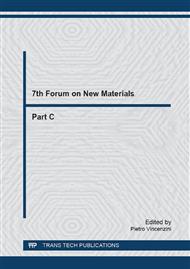p.40
p.48
p.54
p.61
p.69
p.75
p.81
p.90
p.94
Integrating MTJ Devices into a 130nm CMOS Process Flow
Abstract:
A Magnetic Random Access Memory (MRAM) device was successfully embedded into TowerJazz’s 130nm CMOS platform. The fabricated devices are stand-alone 4Mbit and 1Mbit MRAM memories and Multi-MLU magnetic sensors. This paper will describe the process development challenges in adapting a standard 130nm Cu BEOL to incorporate the magnetic cell element, and the device sensitivities to processing.The main process challenges to be discussed are 1) formation of shallow damascene Cu contacts to the lower electrode; 2) patterning of the 150nm magnetic cell both lithography and etching of the magnetic stack; 3) planarization of the topography from the magnetic cell; 4) formation of dual damascene VIA’s to both the magnetic cell upper electrode and to the CMOS. Some electrical yield results of the stand-alone MRAM memory and magnetic sensors will be presented. This project was a collaborative effort between TowerJazz and Crocus Technology
Info:
Periodical:
Pages:
81-89
Citation:
Online since:
October 2016
Keywords:
Price:
Сopyright:
© 2017 Trans Tech Publications Ltd. All Rights Reserved
Share:
Citation:


